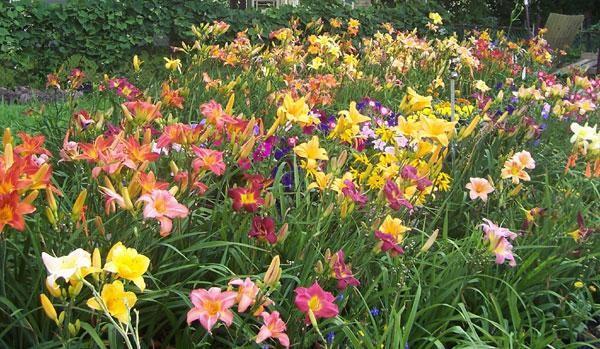We grow daylilies correctly
 Yellow and red, monochromatic and two-colored, simple and double, imposing clumps or compact bushes of daylilies firmly settled in flower beds of flower growers. These unpretentious plants are so diverse and practically undemanding to care for that they become a real find for those who love bright flowers, but have absolutely no time to deal with them.
Yellow and red, monochromatic and two-colored, simple and double, imposing clumps or compact bushes of daylilies firmly settled in flower beds of flower growers. These unpretentious plants are so diverse and practically undemanding to care for that they become a real find for those who love bright flowers, but have absolutely no time to deal with them.
What do you need to know about daylilies so that they delight with their abundant flowering and develop actively?
Daylilies are called "krasodnevy" - their inflorescences are very beautiful, but they bloom one day, but during most of the summer new buds appear every day.
Landing features
All daylilies are very resistant to changing growing conditions and tolerate short-term drought or waterlogging well. They bloom most efficiently in a sunny place, however, light partial shade is also suitable for flowers.
Daylilies can be planted in cloudy weather in early spring and late summer. The soil for planting plants should be neutral. Add lime to the acidic soil and dig up the flower bed before planting the bushes. When grown in areas with a close occurrence of groundwater, a drainage layer must be laid in the holes, which will protect the roots of daylilies from decay. Add sand to heavy clay soil, and a little clay to light sandy soil.
It is good to put some organic matter, for example, humus, into the holes when planting plants.
The rhizome of the daylily purchased in the store may be slightly dry, therefore, immediately before planting, it must be soaked for a couple of hours in water, adding a little potassium permanganate there for disinfection and prevention of putrefactive diseases.
How to care for daylilies?
It is best to water the bushes in the evening, not often, but abundantly.
Fertilizing daylilies, it is better not to get carried away too much. It is enough to "feed" them well twice a year with complex mineral fertilizers:
- in the spring;
- after the end of flowering (in August).
Variety of species
Today daylilies are already being divided into groups. Some of the most popular types of flowers are the following groups:
- Double - with double flowers, which have an additional row of petals;
- white - this includes varieties with a delicate monotonous color of inflorescences (cream, lavender, yellow);
- Spider - with narrow long petals;
- fragrant - with a pleasant light scent.